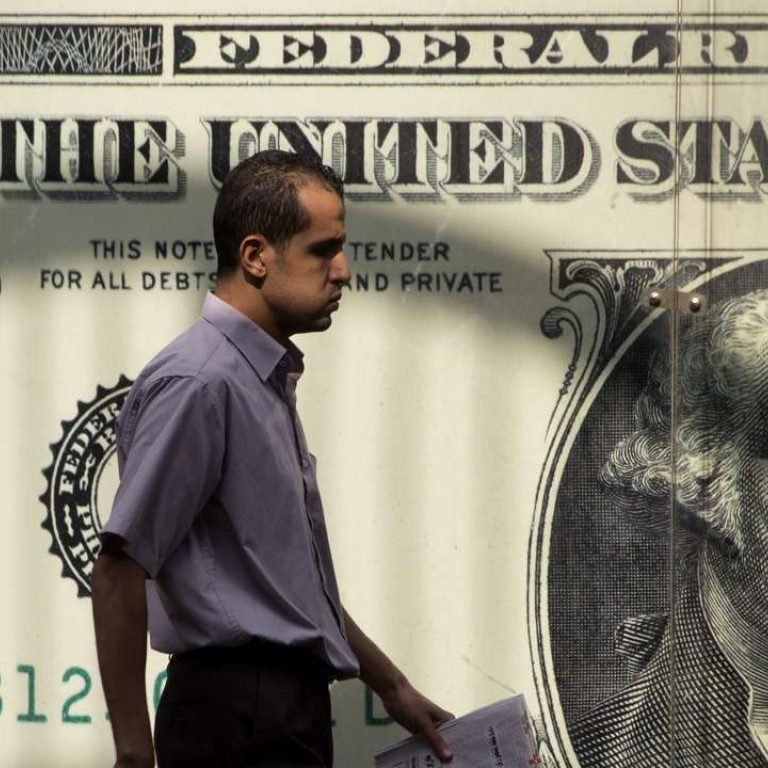
Trump and Yellen may soon be at daggers drawn over dollar’s value
US monetary policy - in particular the divergence between higher US interest rates and much lower in the eurozone and Japan – is a stronger driver of the dollar’s performance than comments by Trump administration officials
If there’s one thing international investors and market commentators can’t accuse US President Donald Trump of, it is having concealed his economic policy intentions prior to assuming the presidency.
While many observers doubted - and indeed still doubt – whether Trump would honour his campaign pledges if elected president, they can’t say that they were not forewarned.
As far back as August 2015, two months after he formally announced his candidacy, the former real estate mogul complained that the US dollar was “hurting” the US and eroding companies’ competitiveness.
“It sounds good to say we have a ‘strong dollar’. But that’s about where it stops,” Trump said in an interview.
Since then, the dollar index - a gauge of the greenback’s performance against a basket of peers - has risen a further 5 per cent, with the currency now trading close to a 14-year high.
Indeed, just days before Trump became president last Friday, he told The Wall Street Journal that “our companies can’t compete with them [Chinese companies] now because our currency is too strong. And it’s killing us.”
Trump’s willingness to question America’s traditional “strong dollar” policy - over the past two decades, successive US administrations have stuck to the mantra that a strong dollar is in the country’s national interest - is fuelling volatility in foreign exchange markets.
Yet if Trump wants to talk down the greenback, this will be easier said than done.
The Federal Reserve has already indicated that it expects to step up the pace of interest rate increases this year in response to an economy on the cusp of full employment, and an inflation rate that is gradually approaching the Fed’s 2 per cent target.
On January 18, Fed chair Janet Yellen struck a hawkish note by warning that “waiting too long to [raise rates] could risk a nasty surprise down the road - either too much inflation, financial instability or both.”
Expectations of tighter US monetary policy are precisely what has caused the dollar index to surge 25 per cent since mid-2014.
Make no mistake, Trump and Yellen are not singing from the same hymn sheet and, provided the US economy continues to gather momentum in the coming months, could be at daggers drawn if the dollar continues to strengthen.
Currency investors have already latched on to the mixed signals from US policymakers.
The dollar index has fallen nearly 3 per cent since January 3, trimming its gains since the US election to 2.4 per cent.
While this is partly because of concerns that the so-called “Trumpflation” trade has been overdone, Trump’s own comments about the dangers of a strong dollar are a key factor.
The dollar’s sudden retreat has confused traders who must now contend with conflicting messages within the US political and financial establishment when taking bets on the greenback’s direction.
Should investors pay more attention to Trump or Yellen, and how will the domestic tensions over US monetary and economic policy affect the dollar?
Firstly, it will be the Fed’s actions that will have the strongest bearing on foreign exchange markets.
US monetary policy - in particular the stark divergence between higher US interest rates and much lower or negative rates in the eurozone and Japan – is a stronger driver of the dollar’s performance than comments by Trump administration officials.
The dollar is now one of the highest-yielding currencies among advanced economies. Deutsche Bank describes the greenback as a “King Kong” in foreign exchange markets, overpowering other currencies.
Just as importantly, Trump’s own economic policies, which are expected to include a hefty fiscal stimulus package and measures to deregulate the economy, are likely to fuel inflationary pressures, increasing the scope for a faster pace of monetary tightening, thereby strengthening the dollar further.
On the other hand, it is not clear how much more momentum there is behind the dollar’s run.
Many investment strategists believe the greenback is already overvalued. A recent survey by Bank of America Merrill Lynch revealed that bets on a stronger dollar are now the world’s most crowded trade.
If the dollar’s recent slide continues, the Trump administration is likely to become less sensitive to movements in FX markets.
Still, the bet is that the greenback will resume its ascent, putting the US’s “strong dollar” policy under further strain.
Nicholas Spiro is a partner of Lauressa Advisory

